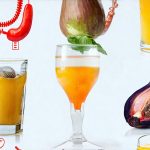Bladder flare-ups are incredibly disruptive. That sudden urgency, the pain, the constant trips to the bathroom – it can feel like your body has turned against you. These episodes aren’t a sign of something seriously wrong (though always consult with a healthcare professional to rule out underlying issues), but rather an exacerbation of existing bladder sensitivity or conditions like Interstitial Cystitis (IC) or Overactive Bladder (OAB). Managing flare-ups often involves identifying and avoiding triggers, which can be highly individual. However, there are common food and beverage culprits that frequently contribute to increased bladder irritation for many people experiencing these uncomfortable episodes. Understanding these potential irritants is the first step towards regaining control and finding some much-needed relief.
This article will explore foods and drinks often associated with bladder flare-ups, offering a guide to help you identify your personal triggers and make informed dietary choices. It’s important to remember that everyone is different; what bothers one person might not affect another. This isn’t about eliminating entire food groups unnecessarily, but rather about being mindful of how certain items impact your body and adjusting your diet accordingly. We will focus on providing information so you can work with your healthcare provider to create a personalized plan for managing your bladder health.
Common Dietary Culprits in Bladder Flare-Ups
Many foods contain compounds that can irritate the bladder lining, leading to increased urgency, frequency, or pain during a flare-up. These aren’t necessarily “bad” foods – many are perfectly healthy for most people – but their chemical properties can exacerbate bladder sensitivity. Acidity is a significant factor; highly acidic foods often contribute to irritation because they directly impact the delicate tissues of the bladder. Other problematic compounds include artificial sweeteners, caffeine, and certain preservatives. It’s crucial to note that identifying these triggers often requires an elimination diet or careful tracking of what you eat and how it affects your symptoms. If you suspect specific foods are contributing to flare-ups, consider exploring ways to pinpoint personal triggers for more targeted dietary adjustments.
Beyond acidity, the osmolality of a food or drink also plays a role. Osmolality refers to the concentration of dissolved particles in a liquid. Highly osmotic substances can draw water into the bladder, increasing its volume and potentially triggering urgency. Beverages like strong coffee, tea, and some fruit juices fall into this category. The goal isn’t to live on a restricted diet forever but rather to understand your individual sensitivities so you can minimize flare-ups and improve your quality of life. Remember that food diaries are invaluable tools for pinpointing your specific triggers—documenting what you eat and how you feel afterward is key.
Finally, the impact of certain foods isn’t always immediate. Sometimes, it takes a day or two for symptoms to develop after consuming a trigger food, making identification more challenging. This delayed reaction highlights the importance of consistent tracking and careful observation. It’s also worth considering that combining multiple potential irritants (e.g., coffee and artificial sweetener) can have a stronger effect than either one alone. Learning how to manage your diet proactively can significantly improve your bladder health; explore common foods that irritate a sensitive bladder for a starting point.
The Role of Acidic Foods
Acidic foods are notorious bladder irritants because they directly impact the sensitive lining of the bladder, increasing inflammation and triggering symptoms. – Citrus fruits (oranges, lemons, grapefruit, limes) – Tomatoes and tomato-based products (sauce, ketchup, juice) – Vinegars (including balsamic vinegar) – Spicy foods (chili peppers, hot sauce) – capsaicin is a significant irritant – Carbonated beverages (soda, sparkling water) – the bubbles can also contribute to irritation.
While completely eliminating these foods might not be necessary for everyone, reducing your intake during a flare-up can often provide significant relief. Consider swapping citrus fruits for less acidic alternatives like melon or pears. When using tomato products, look for low-acid varieties or reduce portion sizes. If you enjoy spicy food, experiment with milder options or use herbs and spices that are less likely to irritate your bladder. Moderation is key; a small amount of an acidic food might not trigger symptoms, but large portions could exacerbate them.
It’s also important to remember the hidden sources of acidity. Many processed foods contain citric acid as a preservative, so reading labels carefully is crucial. Condiments like pickles and relish are often high in vinegar, contributing to bladder irritation. Even seemingly harmless foods can have acidic components; for example, some types of berries (cranberries) are known to be problematic for people with sensitive bladders. To better understand the impact of diet on your bladder health, consider reviewing foods to avoid when managing a sensitive bladder.
Caffeine & Bladder Irritation
Caffeine is a well-known diuretic, meaning it increases urine production. This alone can contribute to bladder urgency and frequency during a flare-up. However, caffeine also has a direct irritating effect on the bladder lining in some individuals. – Coffee – Tea (especially black tea) – Soda – many sodas contain both caffeine and artificial sweeteners – Chocolate – Energy drinks
The amount of caffeine that triggers symptoms varies significantly from person to person. Some people can tolerate a cup of coffee without any issues, while others experience immediate and severe irritation. Reducing or eliminating caffeine intake is often one of the first dietary changes recommended for managing bladder flare-ups. Consider switching to decaffeinated beverages or herbal teas (avoiding those with potential bladder irritants like peppermint). For additional strategies to manage your symptoms, you might find breathing techniques to reduce bladder irritation helpful.
If you struggle to cut back on caffeine cold turkey, try gradually reducing your intake over time. This can help minimize withdrawal symptoms and make the transition easier. Be mindful of hidden sources of caffeine in medications and supplements as well. Staying hydrated is also crucial when reducing caffeine intake; drinking plenty of water helps dilute urine and reduce bladder irritation.
Artificial Sweeteners & Their Impact
Artificial sweeteners, commonly found in diet sodas, sugar-free candies, and some processed foods, have been linked to increased bladder symptoms for many individuals with IC or OAB. – Aspartame – Sucralose (Splenda) – Saccharin – often found in older products.
The exact mechanism by which artificial sweeteners irritate the bladder is not fully understood, but it’s believed they may disrupt the gut microbiome, leading to inflammation and increased sensitivity. Some artificial sweeteners also have a high osmolality, drawing water into the bladder and exacerbating urgency. If you suspect artificial sweeteners are contributing to your flare-ups, consider eliminating them from your diet altogether and observing whether your symptoms improve. Understanding how dietary choices impact your overall health is key; explore strategies for blending flow-friendly foods into normal meals.
Switching to natural sweeteners in moderation (like honey or maple syrup) might be an option, but even these should be used cautiously as excessive sugar intake can also have negative health consequences. Reading food labels carefully is essential for identifying hidden sources of artificial sweeteners. Many “sugar-free” products contain them, so it’s important to be vigilant.
It’s crucial to remember that managing bladder flare-ups isn’t about deprivation but rather empowerment. By understanding potential triggers and making informed dietary choices, you can take control of your health and minimize the impact of these disruptive episodes on your daily life. Remember to always consult with a healthcare professional for personalized advice and guidance tailored to your specific needs.





















